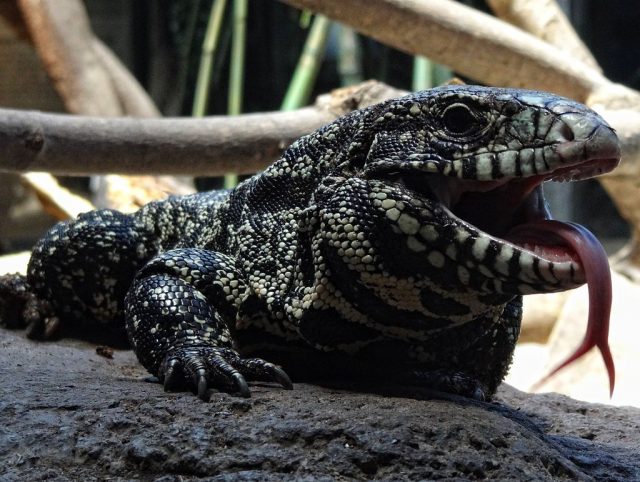Type the name of the breed you're looking for below
[wpdreams_ajaxsearchlite] Don't see the breed your're looking for? Click here and let us know!
Black and White Tegu
| Place of Origin and Range | Found only in Southern South America. |
| Description | As hatchlings they have an emerald green complexion from tip of their snout to midway down their neck with black markings; the emerald green eventually fades to black within a couple of months after shedding. |
| Morph Patterns Available | Yes |
| Adult Size | Can grow up to 4-4.5 feet (120 to 140 cm) |
| Accommodation | Its native habitat is rainforest trees and cliffs, and it also frequently adapts to rural human habitations, roaming walls and ceilings at night in search of insect prey. Most prefer warm habitat with lots of shade and hides. A large enclosure for an active lizard such as this. Low humidity and lots of branches/rocks for climbing. Provide a small water dish and mist twice daily. Cover the sides of the cage when possible to prevent injury to your gecko when running into glass. |
| Lifespan | Can live 20+ years |
| Feeding / Diet | Insects, some mice, some baby chicks, canned dog food, and a variety of fruit should be offered to these lizards. |



